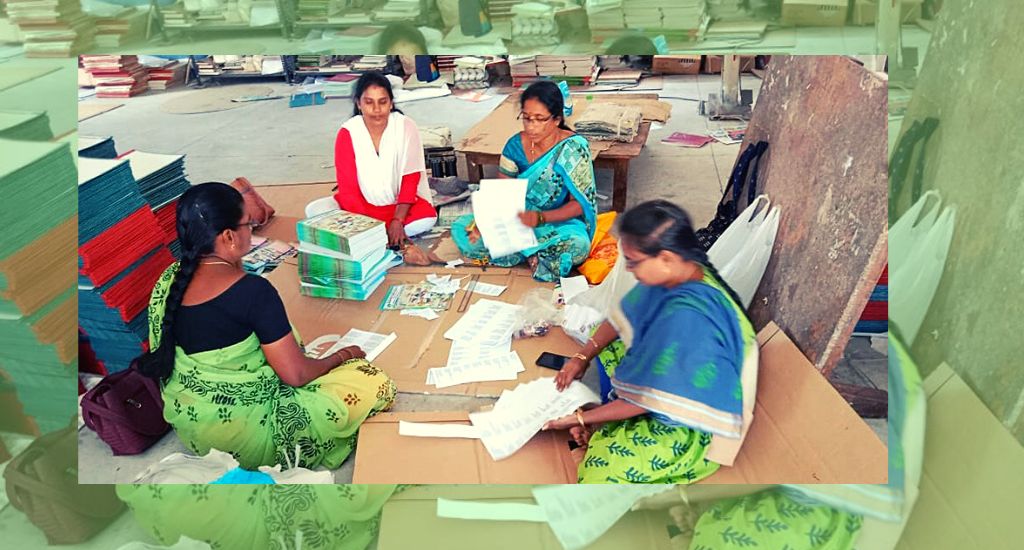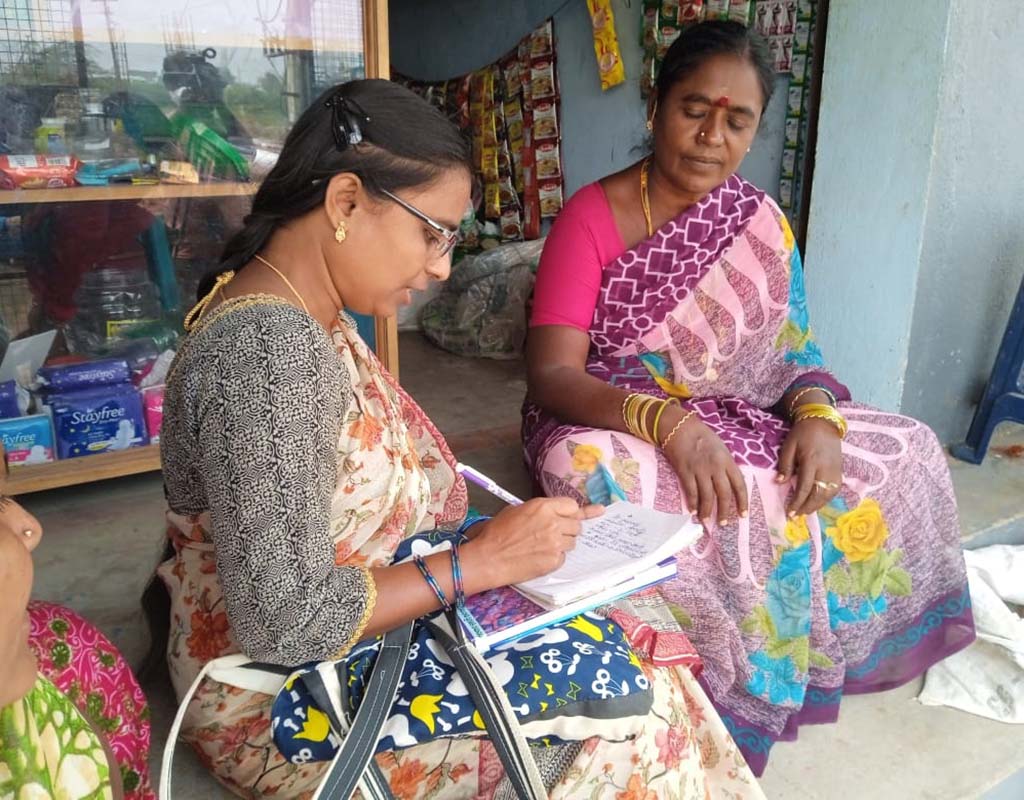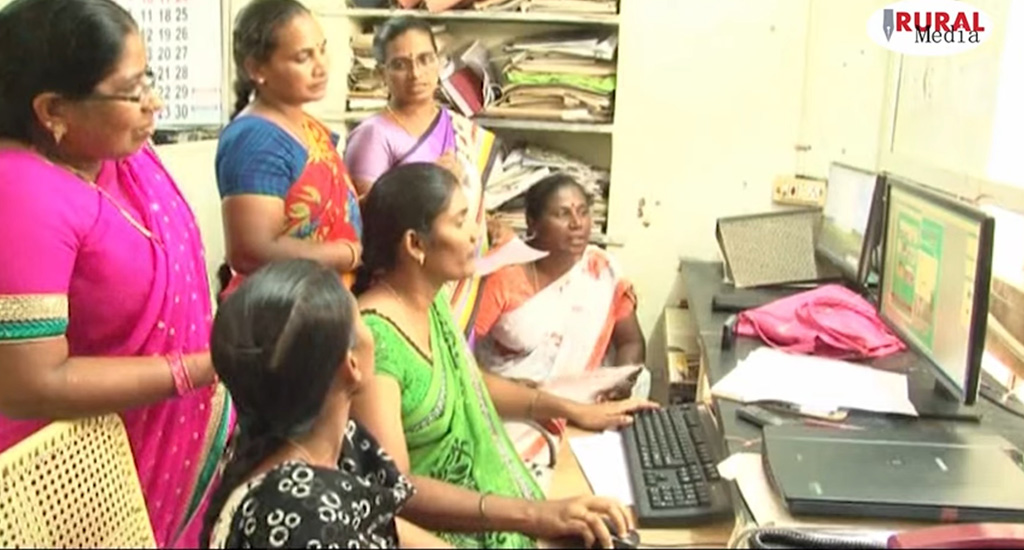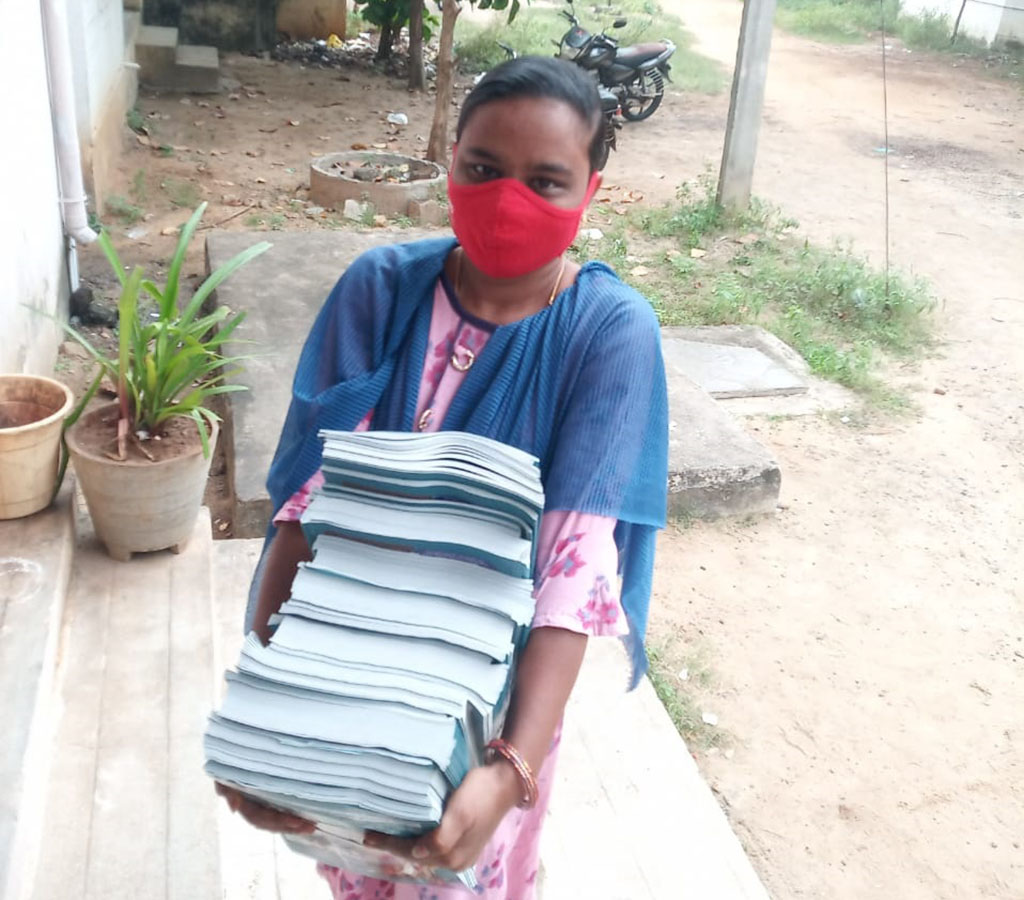
How a tribal women-run magazine changes life for the better
Mahila Navodayam, a Telugu magazine meaning “new dawn”, published for women and by women, brings about social changes and women’s empowerment – despite initial hardships.

Mahila Navodayam, a Telugu magazine meaning “new dawn”, published for women and by women, brings about social changes and women’s empowerment – despite initial hardships.
It’s hard to imagine a group of women who have only elementary education bringing out a magazine – right from writing and editing to designing and printing. But that’s what a group of tribal women from a marginalised background does in Chittoor district of Andhra Pradesh.
The 36-page colour monthly magazine, Mahila Navodayam, which means new dawn in Telugu, carries articles about government schemes and on topics that the villagers need to know.
The magazine is not only about the tenacity of the women who publish the magazine despite so many hurdles, but also about the way it has changed the perspectives of men and women, and more importantly, their lives for the better.
The aim of Mahila Navodayam is spreading information for empowerment of the rural, marginalised and uneducated girls and women of Andhra Pradesh. And the impact is evident.

For instance, earlier cases of sexual assault were simply settled by the local panchayats. Now such cases are reported to the police and resolved officially.
Also Read | Empowering rural women in Assam through the Internet
“We continuously write about women’s health,” Rathnamma, a senior member of the magazine’s team, told Village Square.
“Earlier the women were so ignorant that uterus removal was common among women who were 30-35 years old. Now they consult doctors for gynaecological issues like menstrual irregularities, bleeding and white discharges,” she added. “It’s improved their health and health complications have vastly reduced.”
The stories unfolding around them spurred the women to publish articles against dowry and child marriage. Though there was strong opposition from conservative men, their words produced results.

“Now children refuse to get married at a young age. They prefer to study and find a job,” Mallika, the editor, told Village Square. “Our work has led to a vast improvement in girls’ education.”
As Mahila Navodayam carries details of every government scheme, villagers learn about home loans and educational loans. There are regular articles about higher education possibilities, scholarships and career opportunities.
“There’s an MBA or engineering degree holder in every house. But all of us working in the magazine have fourth, fifth and seventh standard education,” she added with a chuckle.
Also Read | Tribal women in Rajasthan assert citizen rights
Thanks to the information published in the magazine, many women avail of loans now and run small businesses or trades – from small desktop publishing shops to plying autos.
The magazine publishes women’s success stories in each issue to inspire others.
In the beginning though, the magazine had to tackle issues head-on to bring about women’s empowerment.
They collected local news and wrote about local liquor, bribery, dowry and child marriages. Naturally opposition from family members, social stigma and threats followed.
Also Read | How rural Rajasthani women break social shackles to earn freedom, respect from Africa tours
“When we wrote stories and poems on liquor, the liquor lobby was furious. They tried to stop the circulation of the magazine,” said Rathnamma.
When we wrote about the ill effects of liquor consumption, the sellers influenced the men, who in turn told us to stay at home
But the women had the district collector’s backing, as the magazine had been started with government support.
“When we wrote about the ill effects of liquor consumption, the sellers influenced the men, who in turn told us to stay at home and to keep away from Navodayam activities. My husband also tried his best to clip my wings,” recalled Manjula.
But they were determined to speak up for the women and children who were affected by the men’s drinking habits.
The magazine was started in 2001 with the support of the District Rural Development Agency under the World Bank’s poverty alleviation programme. The women were trained to run the newsletter. It wasn’t easy as these were women who had never stepped out of their home.
Recollecting how she joined, Manjula said, “They asked if I’d travel to Tirupati. I had never gone out of Chittoor. But I joined a group of women from different self-help groups and went.”

After a three-day training, the women had to write a small piece about a civic problem in their village. That was the beginning. Of the 150 trainees, only 12 started working towards achieving the magazine’s goal of women’s empowerment. But 20 years later, the eight-page newsletter has grown to be a 36-page magazine.
They take up different roles and work on the production. Some draw cartoons, some get subscriptions, edit stories and design pages. They write the stories in simple language so that the readers understand easily.
The team covers 60 villages. “While the men criticised us, we worked harder to cover more villages,” said Rathnamma.
Also Read | Women’s collectives need to think beyond livelihoods
Now Navodayam has subscribers in the neighbouring districts of Annamayya and Tirupati too. They increase their subscriptions through self-help groups.
Though the women’s work is inspiring and they have a good subscription base, they struggle to come up with the Rs 3 lakh needed to publish the magazine every month.
Navodayam reporters are marginalised women with only the basic education. But they push themselves with each issue to report and edit news, get advertisements, design and publish the magazine.
And they try to get other women in other states to do the same.
“Navodayam brings in drastic changes in our lives. The way we conduct ourselves has changed. We are confident now. We visit other states, attend conferences, address gatherings, share our experiences,” said Mallika.
The women now earn and save money, handling their own bank accounts. Though Covid hit them adversely, the team marches on towards a navodayam – a new dawn.
The lead image shows the women at Mahila Navodayam getting the print copies of the magazine ready (Photo courtesy Navodayam)
Chithra Ajith is a journalist based in Kozhikode, Kerala.